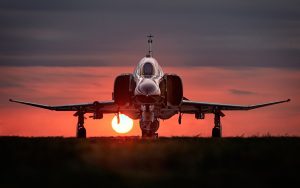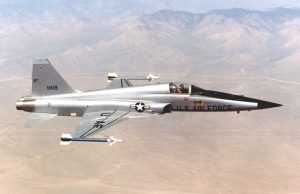A pilot saw a potential issue in landing an F-14 Tomcat. He was glad he had prepared for something that had never happened before.

A Near F-14 Catastrophe: Operations on aircraft carriers are highly complex but normally proceed without a hitch.
Because of the pilots’ and flight deck staff’s meticulous preparation and flawless performance, the carrier performs like a mini-airport in the sky.
Nonetheless, there are occasions when the pilots and crew come dangerously close to a tragedy. The F-14 Tomcats also used conventional airstrips for takeoffs and landings, which was typically trouble-free compared to carrier-based maneuvers. Of course, things were different this time around.
An F-14 Tomcat pilot recounts the time he had to take evasive actions to prevent the destruction of his plane.
The F-14s’ speed-responsive, variable-swept wings were a game-changer. On occasion, the wings would malfunction and become trapped in the swept position, and the wings would malfunction and become trapped in the swept position. There’s a chance this will prevent the Tomcat from touching down safely.
Mark Vizcarra, who flew an F-14, often thought about what would happen if he had to land his plane with its wings swept back. He had contacted his flight school teachers for advice, but they assured him that nothing like this had ever happened, and they did not mention the threat in the plane’s instruction manual either.
There was, however, manual control for the wings. For manual wing movement in the event of a jam, the pilot needs only reach out a hand. As Vizcarra suspected he would face this emergency one day, he practiced this move in the flight simulator. It was for the best that he did so, as four years later, his wings became caught, forcing him to put into action the plans he had meticulously laid out.
Rather than working on a ship’s flight deck, Vizcarra was in Arkansas for Air Force training. It occurred in 1992, just after Desert Storm had ended. Vizcarra’s team used F-15 Eagles in their aerial maneuvers. To aid F-15 pilots in their dogfight training, the pilot assumed the role of a Soviet fighter, simulating a Su-27. Vizcarra’s wings were fully swept back, and he was traveling at speed approaching Mach 1.
When subjected to high G with the wings folded back, the Tomcat was prone to buffeting, although this effect always subsided once it trimmed the wing’s maximum lift. As the swaying did not stop, I realized something was amiss. I took my gaze off the eagles for a split second to ensure my wings were still swept back.
While continuing to engage the enemy and applying maximum Tomcat G, “I instantly took manual control of the wings and adjusted the wing lever into the right position.” Looking back, I saw that the wings weren’t flapping, and I immediately knew I was in trouble. I quickly issued a “Call it Off” order to end hostilities and returned the Tomcat to level flight.
When Rick “Rico” Jordan, Vizcarra’s radio intercept officer, announced they needed to return to base immediately, they took off immediately. Landing in Dallas was a long way off, but it allowed Vizcarra and Jordan time to prepare for what was sure to be an exciting landing. It seemed like those wings wouldn’t budge from where they were.
The lack of flaps and the inability to employ wing spoilers to slow down on impact with the runway made the situation extremely precarious. The runway was barely 8,000 feet long, and Vizcarra knew he would be approaching significantly faster than usual. Would he be able to touch down safely? The plane was scheduled to arrive at lightning speed.
The runway’s arresting gear, which mimics a carrier’s, helped a little.
Jordan was concerned the strategy would fail, but Vizcarra trusted his experience. We emptied fuel to reduce the aircraft’s overall weight so that the approach airspeed could be kept as low as possible, but I kept enough fuel to get to Carswell if my strategy failed and I had to wave off. As we approached, the CO radioed me that the LSOs (landing signal officers) and rescue trucks were already on the scene.
Thankfully, I could land the Tomcat just where I intended to, thanks to the numerous techniques I had practiced with the trainer. Although I yanked every available inch of cable down the runway, my hook caught the arrestment cable at the maximum speed, and it worked as described.
When it finally did, the LSOs were overjoyed. “Man, you’re like a bullet with tyres,” remarked one, “we didn’t even have time to transmit back when you called the ball!” After that terrifying experience, Vizcarra never again hesitated to land in hazardous conditions like terrible weather, darkness, or rough waves. He conveyed the awe and excitement he felt while telling this tale.






